What is the Con Son – Kiep Bac Complex?
The Con Son – Kiep Bac Complex is a cultural and spiritual heritage site located in Hai Duong Province, about 75 kilometers east of Hanoi. It includes two main historical sites: Con Son Pagoda, a peaceful Buddhist temple on the slopes of Con Son Mountain, and Kiep Bac Temple, a shrine dedicated to the national hero Tran Hung Dao. Although the two sites are around 5 kilometers apart, they are commonly visited together and referred to as a single complex.
Con Son Pagoda is one of the three traditional centers of Truc Lam Zen Buddhism in Vietnam, alongside Yen Tu and Quynh Lam. Meanwhile, Kiep Bac Temple was built on the site where General Tran Hung Dao trained his troops to fight against the Mongol invasions in the 13th century. Together, the complex blends religious significance, patriotic history, and quiet natural scenery, making it an important site in Vietnamese cultural memory—even if it remains off the radar for most international tourists.
Who was Tran Hung Dao?
Tran Hung Dao, born Tran Quoc Tuan (1228–1300), was a revered Vietnamese general who led the country’s armies to victory against the Mongol invasions in the 13th century. He is considered one of Vietnam’s greatest military heroes and was later deified as a national saint. Kiep Bac Temple was built to honor his legacy and spiritual significance.
What to See – Highlights of the Complex
1. Con Son Pagoda

Located at the foot of Con Son Mountain, this Buddhist temple is the spiritual heart of the complex. It’s one of the three main centers of Truc Lam Zen Buddhism in Vietnam and dates back to the 10th century, though most of the current structures reflect later renovations.
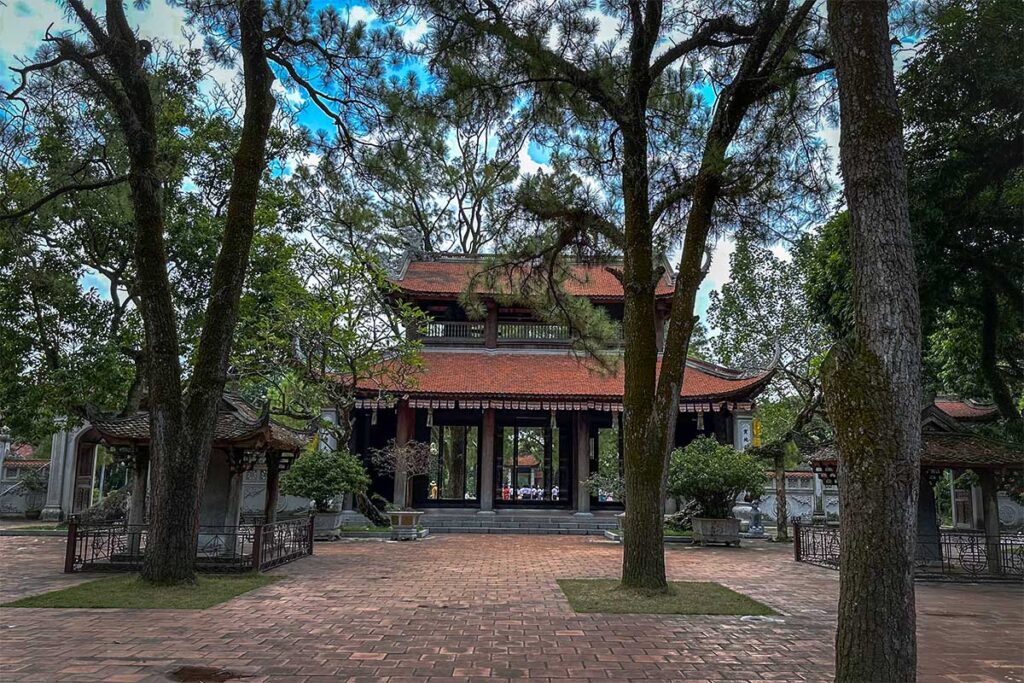
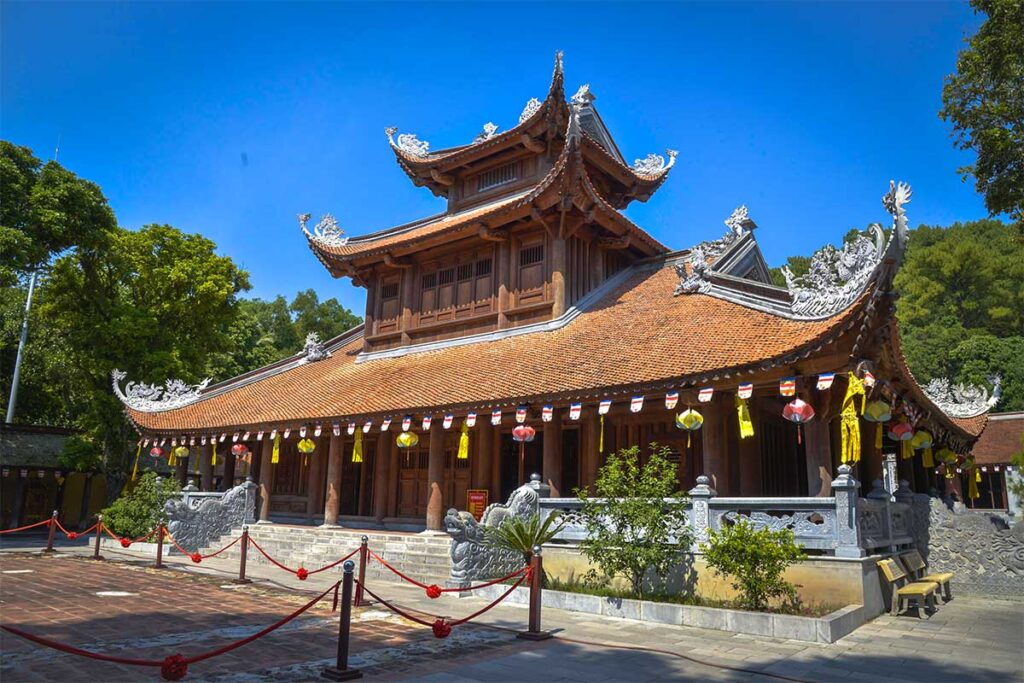
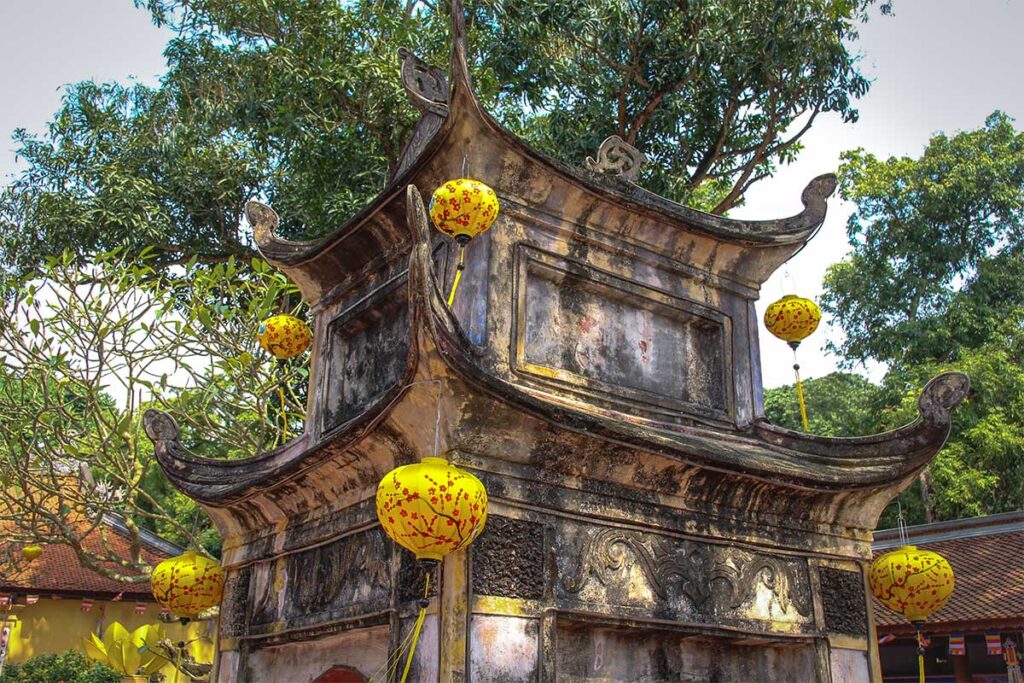
The pagoda features a semi-circular lake, a three-gate entrance, a bell tower, and a lotus-shaped tower behind the main sanctuary.
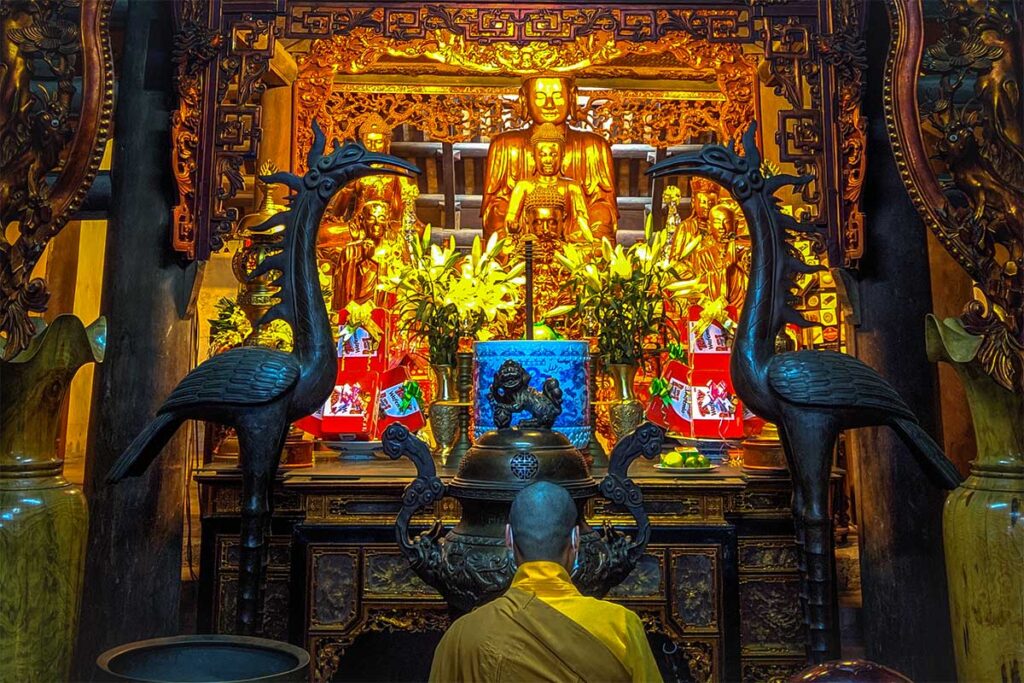

Inside, you’ll find stone steles, sculptures of sacred animals (dragon, unicorn, turtle, phoenix), and several Buddha statues—some dating back to the Le Dynasty. The atmosphere here is calm, surrounded by forested hills and old trees.
2. Con Son Mountain & Viewpoints
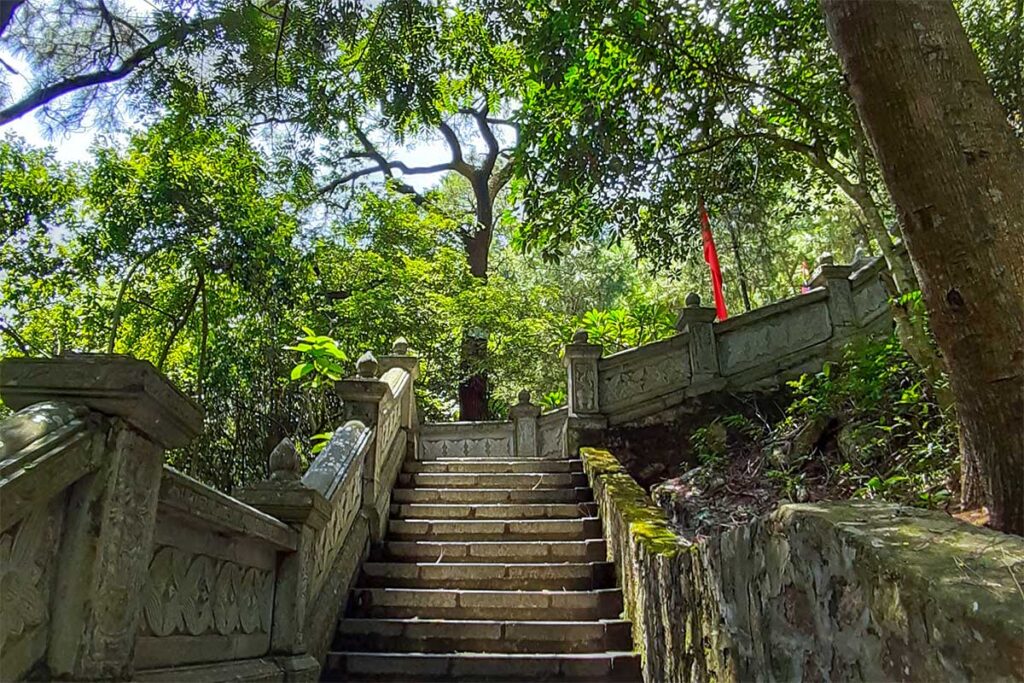
For those willing to climb, a stone path of roughly 600 steps leads through pine forest to the Ban Co Tien, or “Fairy Chessboard”—a flat rock said to be where fairies played chess. Along the way, you’ll pass Gieng Ngoc (Jade Well), believed to be the mountain’s life source, and Con Son Spring, a small stream flowing alongside the forest path.
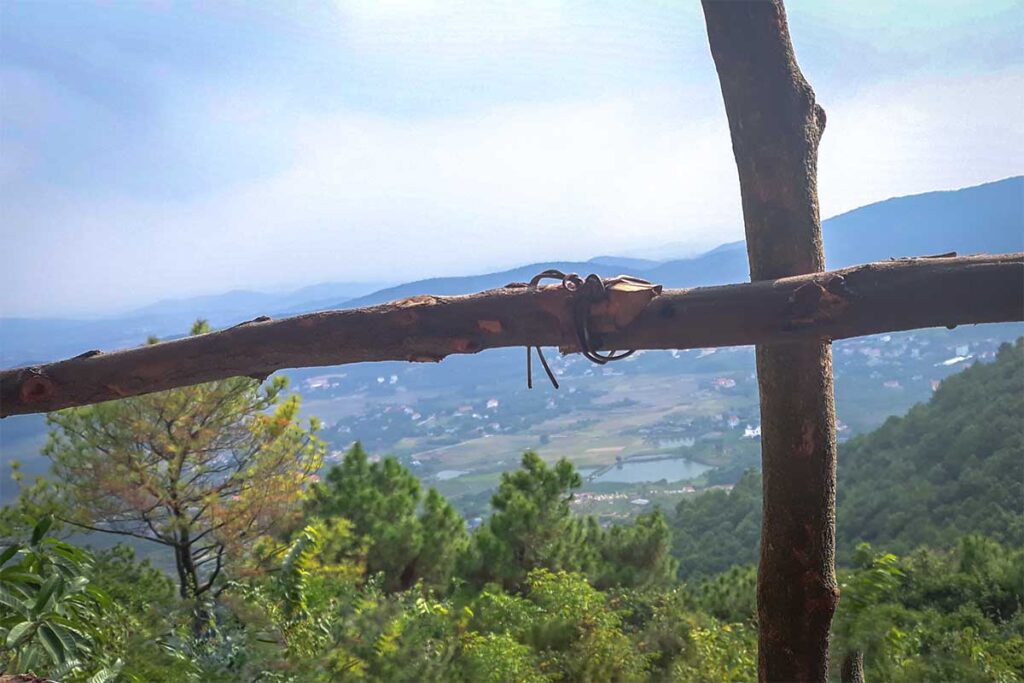
At the top, a two-floor watchtower offers panoramic views of the surrounding landscape, though visibility depends on the weather. The hike is manageable for most visitors and adds a bit of nature to the temple visit.
3. Kiep Bac Temple
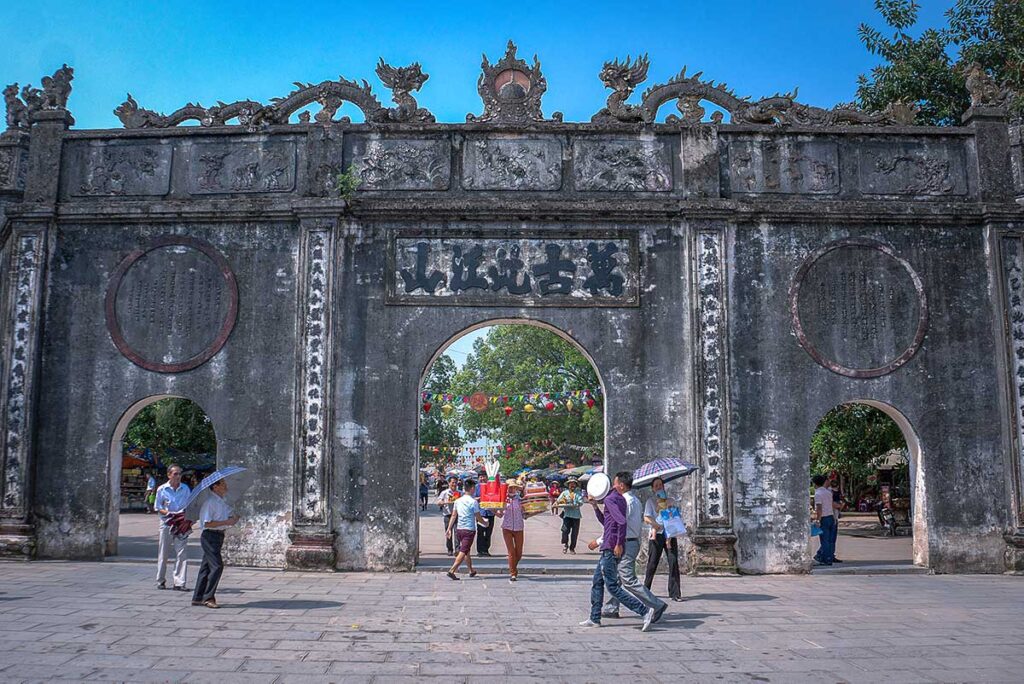
Located about 5 km from Con Son, Kiep Bac Temple honors General Tran Hung Dao, the national hero who led Vietnam’s defense against the Mongols in the 13th century. The temple sits in a quiet valley near the Luc Dau River, where Tran Hung Dao once established his military base.
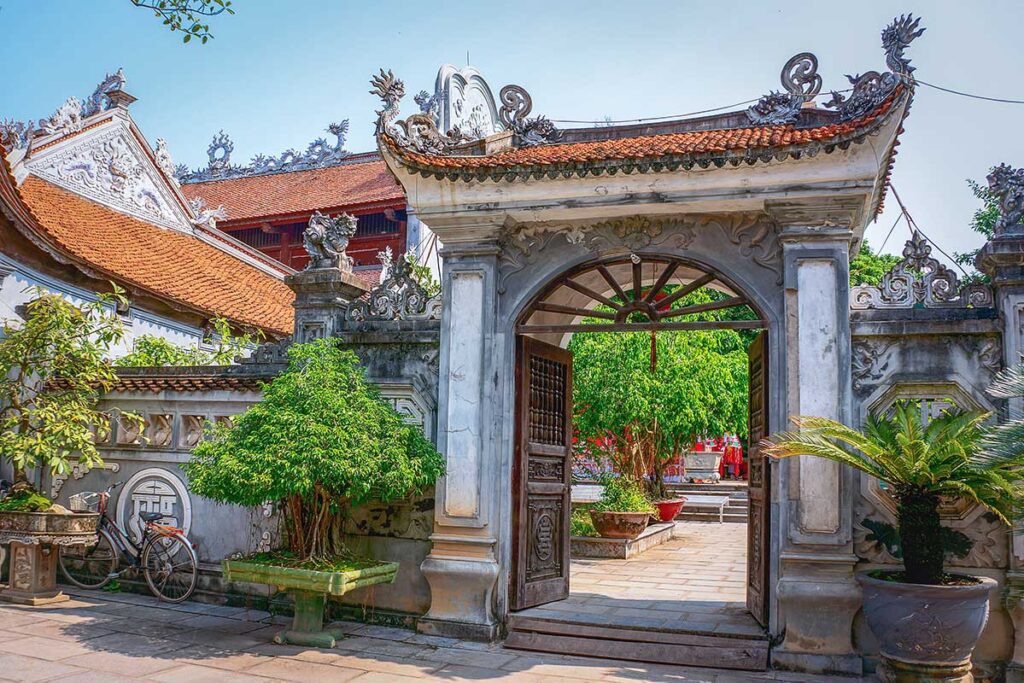

Inside the main hall, altars are dedicated to him, his family, and several of his generals. The Vien Lang hill, believed by some to be his burial site, is located just behind the temple grounds. The area has a solemn, patriotic atmosphere but feels less scenic and well-kept than Con Son Pagoda.
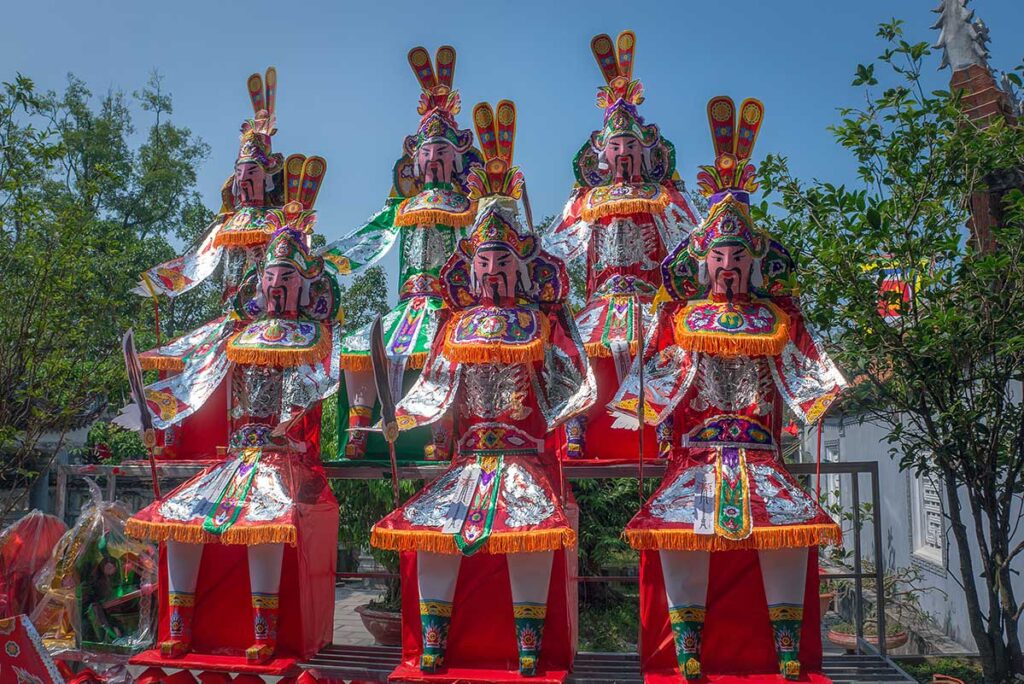
4. Other nearby temples and shrines
If you have extra time or are already in the area, you can also visit a few smaller sites:

Nguyen Trai Temple – Dedicated to the famous scholar and strategist Nguyen Trai, located near Thanh Hu Cave.

Tran Nguyen Dan Temple – A small shrine honoring Nguyen Trai’s grandfather, close to the above.
Nam Tao & Bac Dau Temples – Minor temples at the foot of their namesake hills, often skipped unless you’re specifically interested in local folk religion.
Visiting Information
Opening hours
The Con Son – Kiep Bac Complex is generally open daily from early morning until late afternoon, roughly 7:00 AM to 5:00 PM. There are no strict posted hours, especially for the outdoor areas, but temple halls typically close before dark.
Entrance fees
There’s no official entrance fee to visit either Con Son Pagoda or Kiep Bac Temple. However, you may need to pay small fees for parking (especially during festivals), and donations are encouraged at altars. During large events, you might also encounter unofficial fees (e.g., locals charging for access or shortcuts near temples).
Best times to visit
The complex is open year-round and sees moderate visitor traffic most of the year.
- Quiet visits: Weekdays outside festival periods (especially March–July) are peaceful.
- Festival periods:
- Spring Festival: Around the 23rd day of the 1st lunar month (Feb/March), honoring Venerable Huyen Quang.
- Autumn Festival: Around the 20th day of the 8th lunar month (Sept/Oct), honoring General Tran Hung Dao.
These festivals draw large domestic crowds and religious pilgrims.
Dress code and etiquette
- Wear modest clothing: avoid shorts, tank tops, and revealing attire when entering temple areas.
- Be respectful in sacred spaces: remove shoes when entering halls, speak quietly, and avoid posing for photos near altars.
- During festivals, the mood is celebratory but still spiritual—observe how locals behave and follow suit.
Facilities
- Toilets: Available at both Con Son Pagoda and Kiep Bac Temple. Quality varies—basic but functional.
- Food: Local vendors and small eateries often appear during festival times, especially near Kiep Bac Temple. Outside of those days, food options are limited or nonexistent, so it’s best to bring snacks or eat before you arrive.
- Signage: Mostly in Vietnamese, with little to no English explanation.
- Shaded rest areas: Available at Con Son Pagoda, including benches under trees and around the lake.
Tips for International Visitors
- English is rarely spoken, and there are no foreign-language signs or guides available.
- Best visited independently with a private driver, or combined with other sights in Hai Duong.
- Use a translation app like Google Translate for signs or basic communication.
- Avoid festival days unless you’re specifically interested in Vietnamese cultural events—otherwise, the peaceful atmosphere is lost.
Festival Experience
If you visit during the Spring or Autumn Festivals (lunar months 1 and 8), you’ll encounter a very different atmosphere. Large crowds gather for incense offerings, traditional ceremonies, and a colorful palanquin procession that moves toward the river, where it is placed on a dragon boat.
The boat race on the Luc Dau River is one of the highlights, often accompanied by drumming and chanting. It’s a deeply local event with strong cultural roots, but can also feel overwhelming and chaotic due to crowd control issues, noise, and lack of infrastructure.
How to get there
From Hanoi by car or driver
The most convenient way to reach the Con Son – Kiep Bac Complex is by private car or driver from Hanoi, especially if you’re planning a day trip. The journey takes about 2 to 2.5 hours, depending on traffic. The route follows the Hanoi–Hai Phong Expressway, then cuts northeast toward Chi Linh City in Hai Duong Province. This option allows you to visit both Con Son and Kiep Bac comfortably without relying on public transport.
By motorbike
It’s possible to ride a motorbike from Hanoi, but it’s only recommended for experienced riders or those already in the Hai Duong area. The route combines expressways (which motorbikes aren’t allowed on) and local roads, so you’ll need to plan carefully using National Highways 5 and 37. Expect about 2.5–3 hours one-way and limited signage near the complex itself.
Via Hai Duong City
If you’re already staying in Hai Duong City, getting to the complex is much easier. From the city center, it’s about a 45-minute drive to either Con Son Pagoda or Kiep Bac Temple. This makes it a good option if you’re combining your visit with other places in the area or doing an overnight stay nearby. Local taxis or a car with driver can take you directly to each site.
Why it’s not on the way
While it’s not far from Hanoi, the Con Son – Kiep Bac Complex isn’t located along the main tourist routes between Hanoi, Ninh Binh, or Halong Bay. It sits more to the northeast, near Chi Linh, and doesn’t naturally connect with other major stops unless you’re specifically planning to visit Hai Duong Province. For this reason, it’s not a convenient detour and is best treated as a standalone trip.
Is Con Son – Kiep Bac Complex worth visiting?
The Con Son – Kiep Bac Complex is an interesting place, especially if you enjoy Vietnamese history or quiet spiritual sites. It offers a peaceful atmosphere, scenic mountain surroundings, and meaningful cultural landmarks—but it’s not essential for most travelers. The temples and shrines feel more local than tourist-oriented, and there’s little infrastructure for foreign visitors: almost no English signage, limited facilities, and no real tour options.
It’s also not on any major travel route, so unless you’re already in Hai Duong Province or combining it with other nearby stops, it’s hard to justify the long detour from Hanoi. If you’re short on time, you’ll likely have a more rewarding experience visiting the temples and Pagoda in Ninh Binh, spiritual sites in Hanoi, or the temples in Hue—all of which offer similar cultural depth with better access and services.
That said, the Con Son – Kiep Bac Complex might appeal to those seeking off-the-beaten-track heritage, especially during quiet seasons. If you’re interested in Vietnam’s Buddhist roots or the legacy of General Tran Hung Dao, and don’t mind the lack of polish, this can be a worthwhile half-day trip. Otherwise, it’s a site you can comfortably skip.



